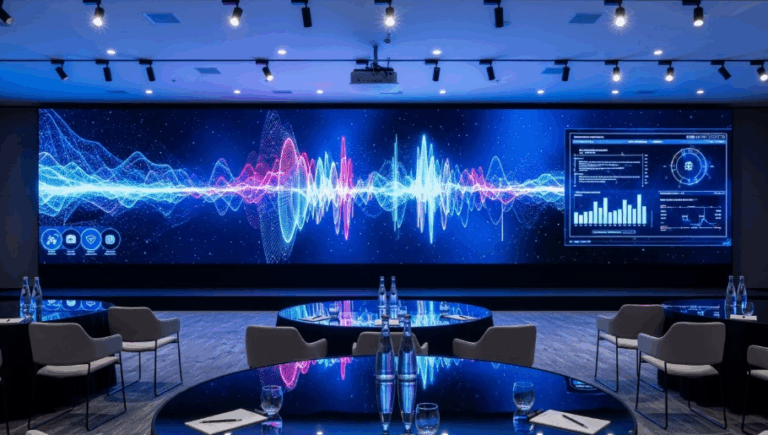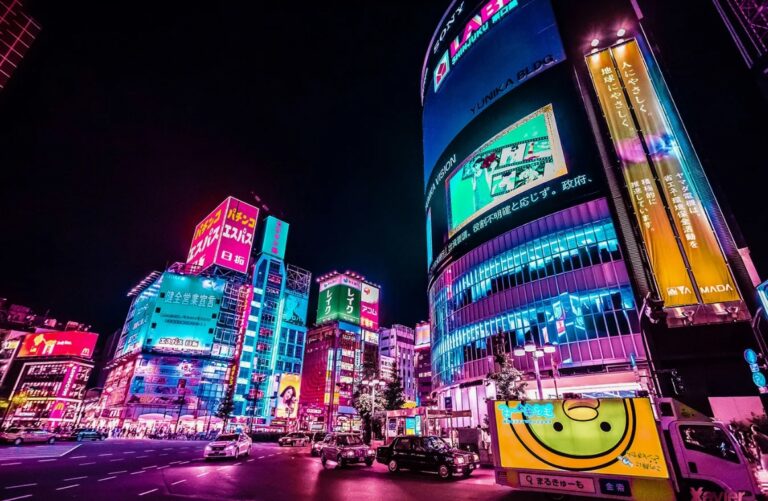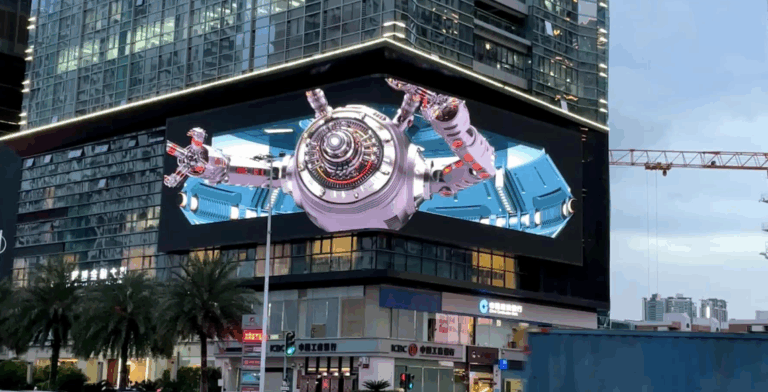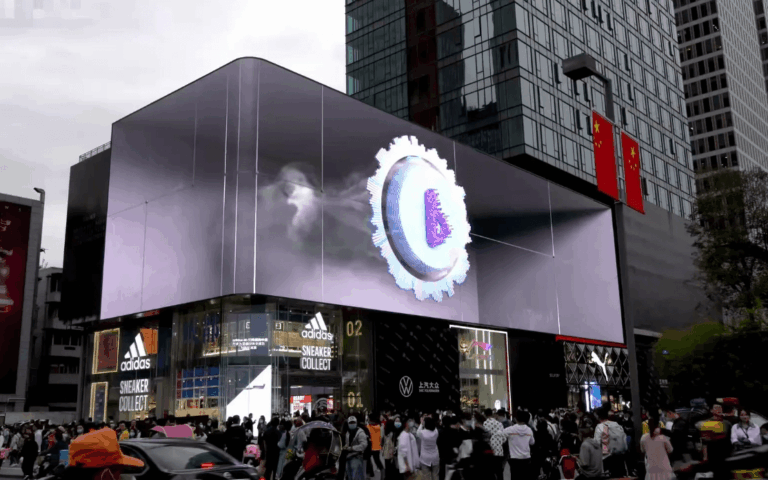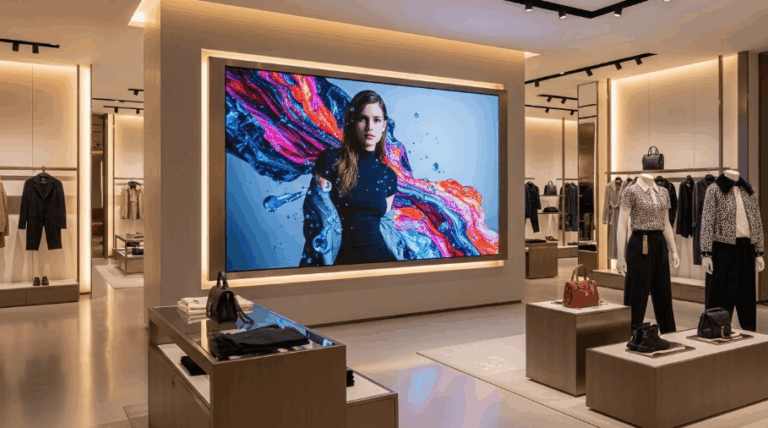Table of Contents
-
What is an XR LED Wall?
-
Why Frame Rate and Latency Are Critical for XR Experiences
-
How to Evaluate Frame Rate Performance
-
The Importance of Low Latency
-
How Low Latency Enhances XR Experiences
-
How to Evaluate Latency Performance
-
The Synergy Between High Frame Rate and Low Latency
-
Other Key Performance Indicators
-
Conclusion
With the rapid advancement of virtual production and Extended Reality (XR) technologies, LED walls have become core equipment for film production, live events, and virtual stages. Whether it’s a Hollywood blockbuster like The Mandalorian, an online concert, or a corporate launch event, XR LED walls are transforming content creation. However, to achieve true “immersion” in virtual productions, smooth visuals and real-time interactivity are essential — both heavily relying on high frame rates and low latency. This article will dive deep into how to assess XR LED wall performance, analyze the impact of high frame rates and low latency on virtual productions, and offer practical advice to help you choose the right equipment.
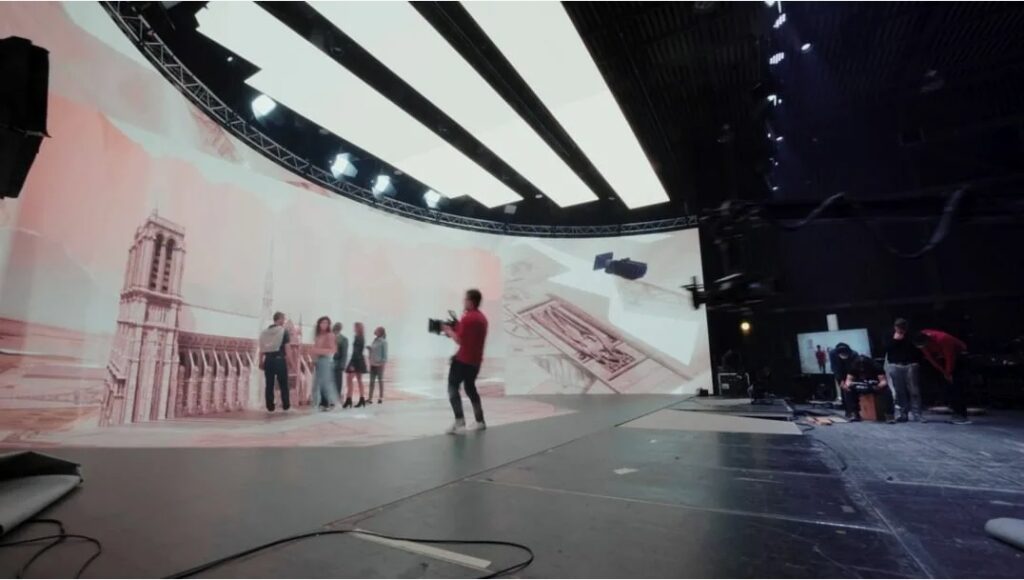
1. What is an XR LED Wall?
An XR (Extended Reality) LED wall is a high-resolution display, typically composed of multiple LED panels stitched together, designed for Virtual Production and real-time scene rendering. Unlike traditional green screens, XR LED walls can display dynamic virtual backgrounds in real time. When combined with camera tracking systems and game engines like Unreal Engine, they allow actors and cinematographers to see realistic environments directly during shooting. Application of LED video wall in XR virtual shooting screen.
This technology not only enhances actors’ performances but also significantly reduces post-production time and costs.
However, the performance of an XR LED wall directly determines the quality of a virtual production. Smooth visuals, real-time interaction, and accurate color reproduction are all closely tied to critical technical specifications — with high frame rates and low latency being two of the most essential factors.
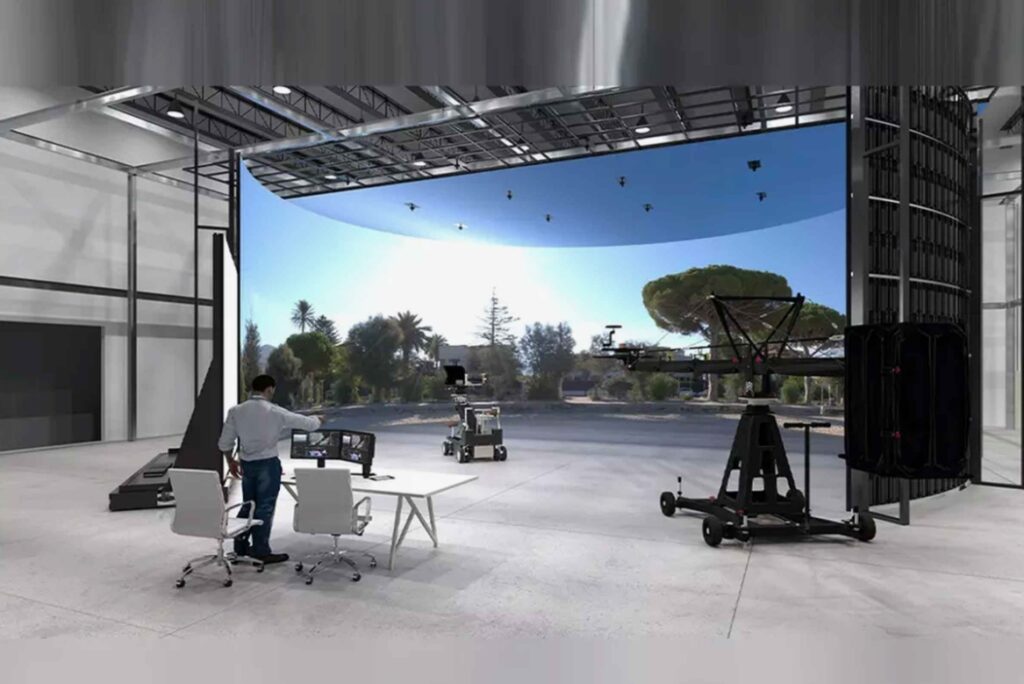
2. Why Frame Rate and Latency Are Critical for XR Experiences
Frame rate refers to the number of frames displayed per second, measured in Hz or FPS (Frames Per Second). In virtual productions, a high frame rate ensures that fast-moving visuals don’t appear blurry, torn, or flickering — especially crucial during high-speed camera moves or dynamic scenes (like action sequences or racing scenes). Low frame rates cause stuttering, disrupt immersion, and can even cause viewer discomfort.
In XR applications, the LED wall is no longer just a passive display; it has become a central part of an interactive environment. When performers or presenters move within an XR scene, the background must immediately respond to their movements, maintaining visual consistency and spatial accuracy. This demands extremely high performance from the display technology.
Scientific Basis for Visual Smoothness: Human vision has a threshold for motion perception. Traditional movies use 24fps because it maintains basic motion continuity. However, in interactive XR environments — especially with fast camera movements or actor actions — lower frame rates cause noticeable stuttering and “motion blur” effects. Studies show that most people can perceive the difference between 60fps and 120fps, and trained professionals can distinguish even higher frame rates.
Latency Chain Reaction: In XR setups, latency refers to the time gap between camera-captured action and its display on the LED wall. This latency chain includes camera sensor processing, position tracking computation, graphics rendering, video signal transmission, and LED panel refresh. Even small delays at each stage can accumulate and severely affect the experience. If the total latency exceeds 20ms, the human eye can detect desynchronization between virtual backgrounds and real-world actions, breaking immersion.
Case Study: High Frame Rate Applications in Film Production
In The Mandalorian, virtual production heavily relied on ILM’s StageCraft technology, where LED walls supported up to 3840Hz refresh rates (closely related to frame rates). This ultra-high refresh rate ensured no flickering or scan lines during high-speed camera shoots, delivering finely detailed interstellar scenes. ILM’s technical team stressed the importance of syncing the LED wall refresh rate with the camera shutter (using Genlock technology) to prevent visual artifacts — proving that high frame rates are not just a bonus, but a professional baseline.
3. How to Evaluate Frame Rate Performance
-
Check Product Specifications:
Review the technical specs carefully to understand rated frame rate (refresh rate) and latency. Generally, higher refresh rates and lower latency are better. High-end XR LED walls today typically achieve 120Hz or higher, with low end-to-end latency. -
Observe Fast-Moving Visuals:
Play test videos with fast-moving objects or rapid camera pans to check for ghosting, blur, or stutter. A good LED wall should display fast motion clearly and smoothly at high frame rates. -
Perform Latency Testing:
Use professional latency testing tools or high-speed cameras. One method is displaying a rapidly changing timer on the screen and recording it with a high-speed camera to calculate the delay between the input signal and screen display. -
Test with Interactive Applications:
Simulate real XR environments, like real-time background switching in a virtual studio, to observe switching smoothness and latency. Test synchronization between user movements and on-screen feedback. XR LED Display Product Guide. -
Refer to Industry Standards and Certifications:
Some industry organizations provide XR display performance standards and certifications. Choosing certified products can offer extra assurance.
| Parameter | Recommended Value | Purpose |
|---|---|---|
| Refresh Rate | ≥3840Hz | Avoid moiré patterns and flicker during filming |
| Frame Rate Support | ≥120FPS | Smoother visuals for high-frame XR engines |
| Input Latency | <10ms | Ensure real-time interaction and camera sync |
| Grayscale Level | ≥14bit | Improve shadow details and visual layering |
| HDR Support | Yes | Reproduce realistic light and color |
4. The Importance of Low Latency
Latency is the time lag between input signal and screen display, measured in milliseconds (ms) or frame counts. In XR virtual productions, low latency ensures real-time interactivity. For instance, when a cinematographer moves the camera, the virtual background must instantly adjust its perspective; when an actor interacts with a virtual object, the screen must react immediately. Any noticeable delay will break immersion and may even ruin the shoot.
Industry standards demand end-to-end latency under 2 frames (approximately 33ms at 60fps). Top-tier equipment like Brompton Technology’s Tessera SX40 processor can achieve latencies as low as 1 frame (~16ms).
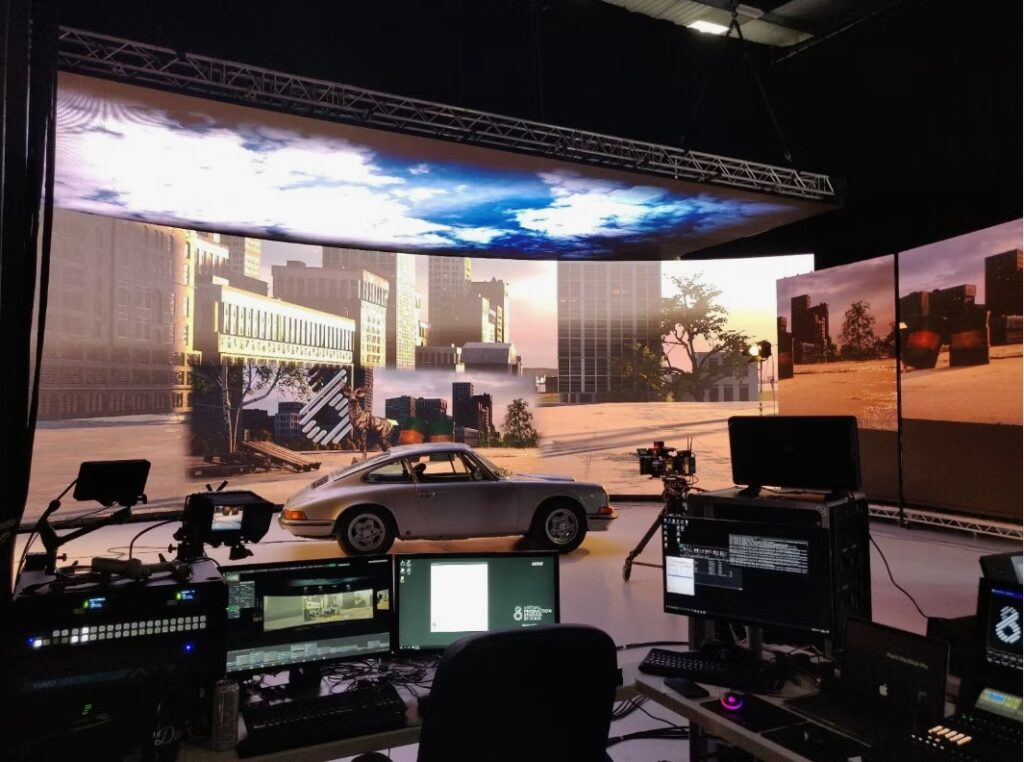
5. How Low Latency Enhances XR Experiences
-
Camera Tracking Accuracy:
XR production relies on camera tracking systems to sync camera movements with virtual backgrounds. High latency causes the background view to “lag,” leading to distortion or “ghosting” effects. -
Actor Interactivity:
Low latency allows actors to see immediate changes in their virtual environment, enhancing natural performances when interacting with virtual characters or triggering scene effects. -
Live Streaming Smoothness:
In virtual concerts or e-sports broadcasts, low latency ensures seamless integration of stage visuals and real-time AR effects, avoiding noticeable stutters for the audience.
Case Study: Low Latency in Virtual Concerts
In 2020, singer Travis Scott’s virtual concert in Fortnite attracted over 12 million viewers worldwide. Massive LED walls and real-time rendering technologies created a dazzling virtual world. Low latency was crucial: synchronization between the LED wall and the game engine was kept under 1 frame, ensuring perfect timing between background animations, music, and lighting. This real-time interaction made audiences feel truly immersed in a dynamic digital universe.
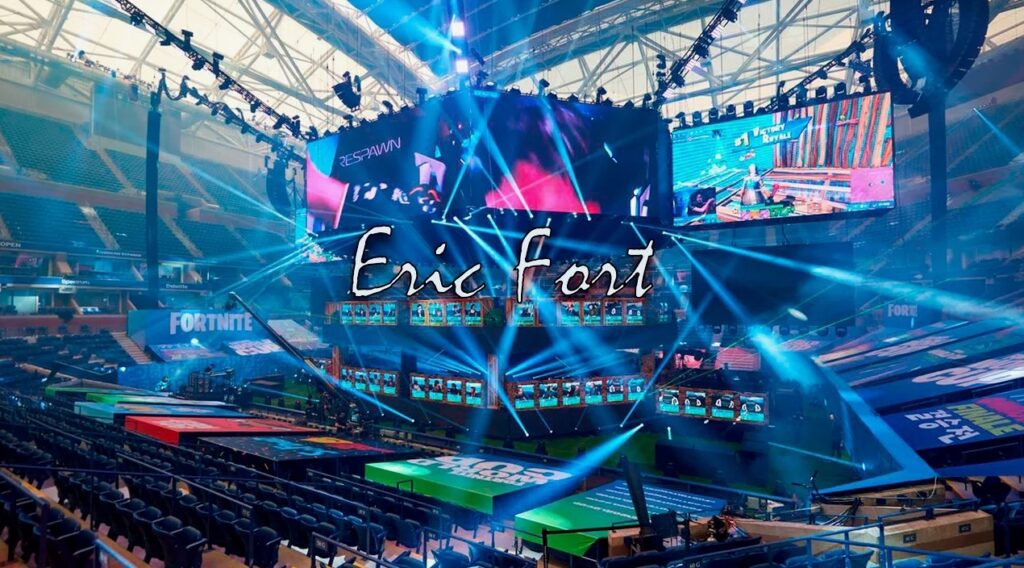
6. How to Evaluate Latency Performance
When selecting an XR LED wall, pay attention to:
-
End-to-End Latency:
Prefer devices with latency under 2 frames; top models can achieve 1 frame. -
Processor Performance:
Choose processors supporting Low Latency Mode (LLM), such as NovaStar MX40 Pro or Brompton Tessera. -
Receiving Cards:
High-performance receiving cards (e.g., Brompton R2) optimize signal transmission and reduce latency. -
System Integration:
Ensure seamless integration between LED walls, processors, and camera tracking systems to eliminate bottlenecks in the signal chain.
7. The Synergy of High Frame Rate and Low Latency
High frame rate and low latency complement each other to create a smooth and realistic XR experience. A high frame rate ensures the fluid presentation of visuals, while low latency guarantees instantaneous response to actions. Both are indispensable, especially in the following scenarios:
-
High Dynamic Shoots: In scenes involving fast camera movements or rapid actor motions, a combination of high frame rate and low latency ensures that the background adjusts seamlessly without visual artifacts.
-
Interactive Virtual Sets: When actors interact with virtual elements (e.g., picking up virtual objects or triggering environmental effects), a synchronized background response is crucial to maintaining the authenticity of the performance.
-
Live Broadcasting and Streaming: In virtual concerts, esports events, and live corporate broadcasts, synchronization between the real-time performance and the rendered environment ensures a cohesive and immersive audience experience.
Without the collaboration of high frame rate and low latency, the XR experience would either feel laggy or visually fragmented, undermining the effectiveness of virtual productions.
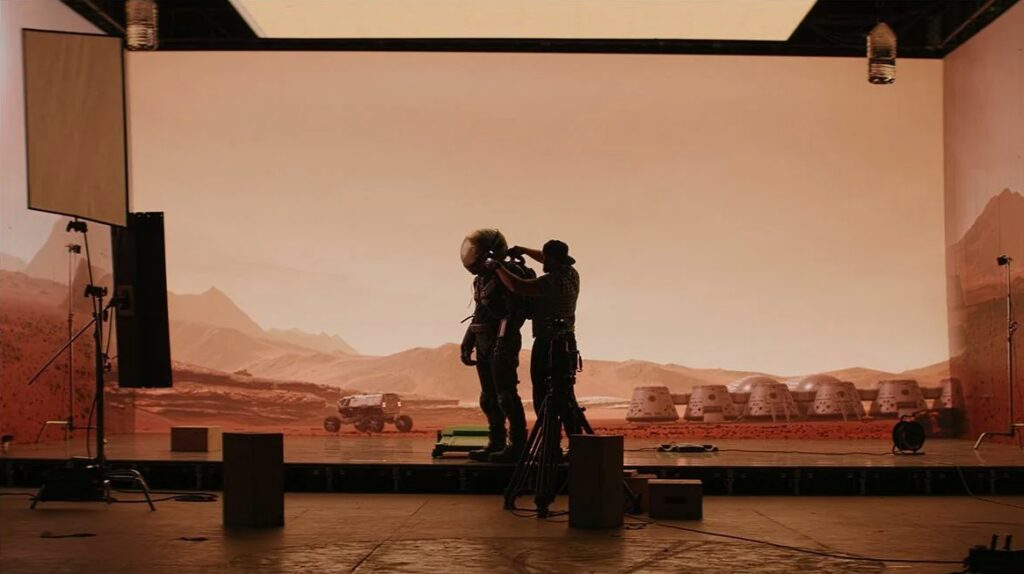
8. Other Key Performance Indicators
Beyond frame rate and latency, several other performance indicators also affect the quality of XR LED walls:
| Parameter | Recommended Value | Role |
|---|---|---|
| Brightness | ≥1000 nits | Ensures clear visuals even under strong lighting |
| Color Accuracy | ΔE < 2 | Maintains the authenticity of color reproduction |
| Contrast Ratio | ≥5000:1 | Enhances depth perception and image clarity |
| Bit Depth (Grayscale) | ≥14-bit | Captures more subtle shading, enhancing realism |
| Viewing Angle | ≥160° (horizontal/vertical) | Allows flexible camera angles without color distortion |
| Panel Uniformity | High consistency | Prevents visual inconsistencies across large screens |
When evaluating or customizing an XR LED wall, it’s important to look at the system as a whole rather than focusing on a single parameter. A well-balanced configuration will yield the best visual and interactive results.
9. Conclusion
As virtual performances and XR technologies continue to evolve, LED background walls have become indispensable tools for modern content production. Whether in filmmaking, live performances, or corporate events, delivering a truly immersive XR experience demands more than just high-resolution screens — it requires high frame rates and ultra-low latency to achieve smooth visuals and seamless interactions.
By thoroughly understanding and evaluating the frame rate, latency, and other key performance indicators, producers, directors, and technical teams can choose the right XR LED wall solutions, laying a solid technical foundation for spectacular virtual productions.
In the coming years, as XR applications expand and audience expectations rise, only those who prioritize and master these technical fundamentals will stand out in the competitive landscape of virtual content creation.

